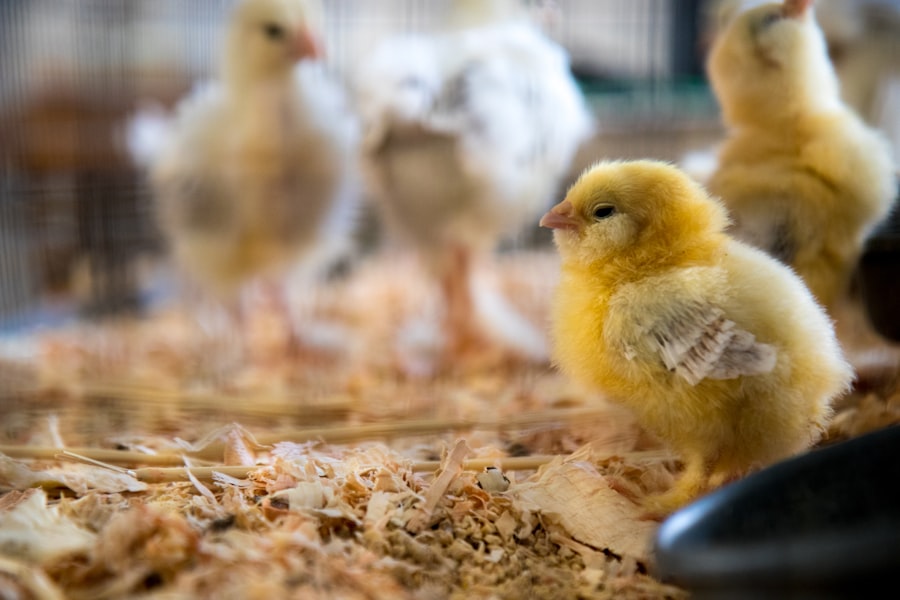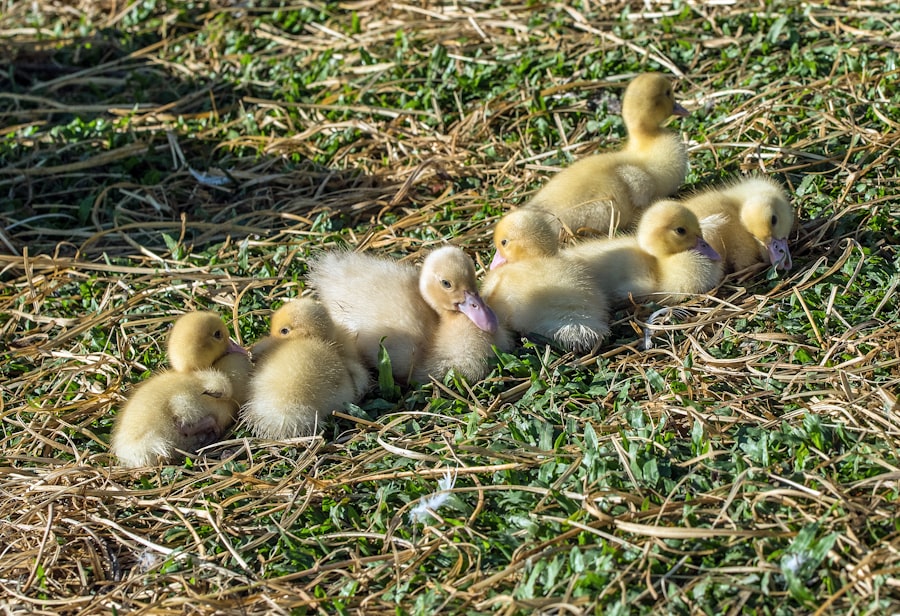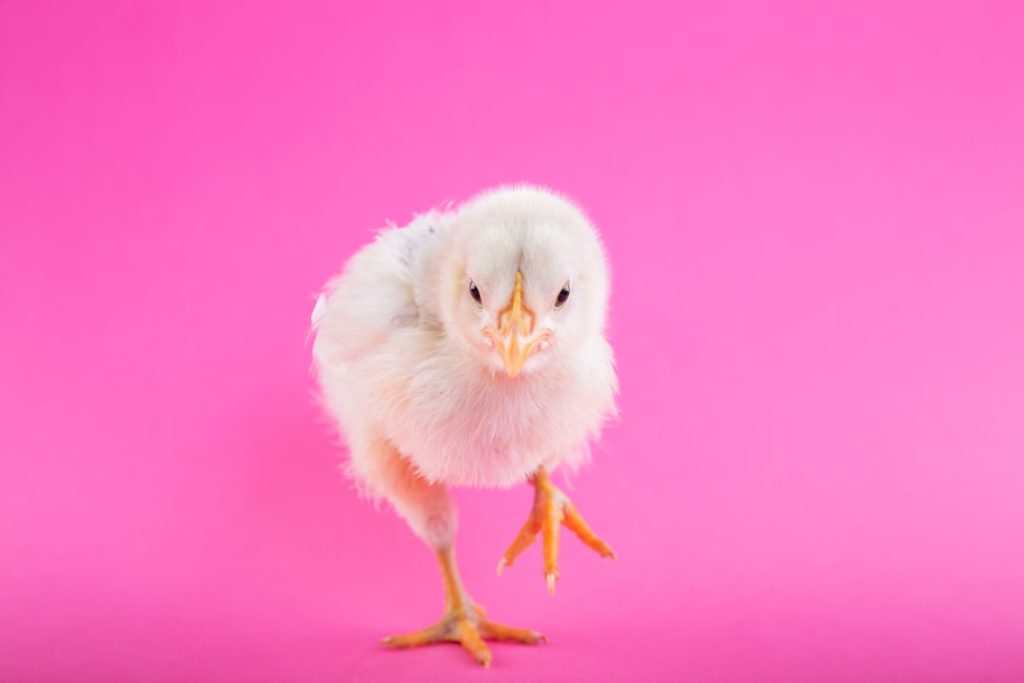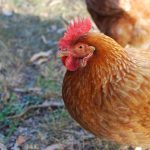A brooder is a crucial tool for raising young chickens, providing a warm and secure environment during their early developmental stages. It functions as a substitute for the warmth and protection typically offered by a mother hen in natural settings. The brooder regulates temperature, ensures access to food and water, and safeguards chicks from predators.
Without a brooder, young chickens face risks such as exposure to cold temperatures, dehydration, and potential predator attacks. Therefore, a proper brooder setup is essential for the health and well-being of chicks. The brooder plays a vital role in chick development by providing a secure space for growth.
It enables chicks to establish routines for feeding, drinking, and resting, which are crucial for their overall health and development. Furthermore, the brooder minimizes stress and anxiety in chicks by maintaining a controlled environment away from potential threats. In summary, the brooder is an indispensable component in the early stages of chicken rearing, offering the necessary support and care for chicks to develop into healthy and productive birds.
Table of Contents
Key Takeaways
- A brooder is essential for young chickens to provide warmth, security, and a controlled environment for their growth and development.
- Setting up the brooder environment involves using a heat source, such as a heat lamp or heating pad, and providing a clean, draft-free space with proper bedding and ventilation.
- Monitoring and adjusting the temperature in the brooder is crucial to ensure that the chicks are comfortable and thriving, as they require different temperatures at different stages of growth.
- Providing proper nutrition and water is important for the health and growth of young chickens, with a focus on high-quality chick starter feed and clean, fresh water at all times.
- Socialization and handling are important aspects of raising young chickens, as they need to be gently handled and exposed to human interaction to become well-adjusted and friendly adult birds.
- Transitioning from the brooder to the coop should be done gradually, allowing the chickens to acclimate to the outdoor environment and providing them with a safe and secure space in the coop.
- Signs that chickens are ready to leave the brooder include fully feathered bodies, the ability to regulate their own body temperature, and a confident and active demeanor.
Setting Up the Brooder Environment
Choosing the Right Location and Bedding
When setting up a brooder for young chickens, it’s essential to place it in a draft-free area, away from direct sunlight and extreme temperatures. A large cardboard box or plastic tub can be used as a brooder, lined with absorbent bedding such as pine shavings or straw to provide a soft and dry surface for the chicks to walk on.
Maintaining a Clean and Healthy Environment
It’s crucial to ensure that the bedding is clean and dry at all times to prevent any potential health issues for the chicks. A heat source, such as a heat lamp or heating pad, should be provided to maintain the temperature inside the brooder at around 95 degrees Fahrenheit for the first week, gradually decreasing by 5 degrees each week until reaching room temperature. This mimics the warmth that the chicks would receive from a mother hen and is crucial for their survival and development.
Providing Access to Food and Water
Additionally, a feeder and waterer should be placed in the brooder to provide access to food and water at all times. The feeder should be filled with chick starter feed, which is specially formulated to meet the nutritional needs of young chickens. Fresh water should be provided in a shallow dish or waterer, ensuring that it is kept clean and free from contaminants.
Monitoring and Adjusting Temperature

Monitoring and maintaining the temperature inside the brooder is crucial for the health and well-being of young chickens. It is important to regularly check the temperature using a thermometer placed at chick level to ensure that it remains within the recommended range. If the temperature is too high, the chicks may become overheated and dehydrated, while a temperature that is too low can lead to cold stress and potential health issues.
Adjusting the height of the heat lamp or changing the wattage of the bulb can help regulate the temperature inside the brooder. It is also important to observe the behavior of the chicks to determine if they are comfortable with the temperature. Chicks that are huddled together directly under the heat source may be too cold, while chicks that are panting or avoiding the heat source may be too hot.
Making adjustments to the heat source based on these observations can help maintain an optimal temperature for the chicks. Additionally, it is important to have a backup heat source available in case of power outages or equipment failure to ensure that the chicks remain warm and safe at all times.
Providing Proper Nutrition and Water
Proper nutrition is essential for the growth and development of young chickens, making it crucial to provide them with a balanced diet from an early age. Chick starter feed is specially formulated to meet the nutritional needs of young chicks, providing them with essential vitamins, minerals, and protein for healthy growth. It is important to ensure that the feeder is filled with fresh chick starter feed at all times, allowing the chicks to eat as much as they need throughout the day.
Additionally, it is important to monitor their growth and adjust their diet as they mature, transitioning to grower feed once they reach 6-8 weeks of age. In addition to providing proper nutrition, access to clean and fresh water is essential for the health and well-being of young chickens. Water should be provided in a shallow dish or waterer that is easily accessible to the chicks at all times.
It is important to regularly check and refill the waterer to ensure that the chicks have an adequate supply of water throughout the day. Additionally, it is important to keep the water clean and free from contaminants to prevent any potential health issues for the chicks.
Socialization and handling are important aspects of raising young chickens, as they help to build trust and confidence in the birds. Spending time with the chicks on a regular basis can help them become more comfortable around humans and reduce their fear of being handled. Gently handling the chicks from an early age can help them become more tame and friendly as they mature, making it easier to care for them as they grow into adult chickens.
It is important to handle the chicks with care and gentleness, avoiding any sudden movements or loud noises that may startle them. Spending time sitting near the brooder and talking softly to the chicks can help them become accustomed to human interaction and build trust over time. Additionally, providing enrichment such as perches or toys inside the brooder can help keep the chicks active and engaged, promoting socialization and reducing boredom.
Transitioning from Brooder to Coop

Gradual Transition to Reduce Stress
This transition should be done gradually to allow the chickens to adjust to their new environment without becoming stressed or anxious. Introducing them to their new coop during the day when they are most active can help them become familiar with their surroundings before spending their first night there.
Coop Preparation is Key
It is important to ensure that the coop is properly set up with adequate space, ventilation, and access to food and water before moving the chickens in. Providing perches or roosts inside the coop can help them feel secure and comfortable as they adjust to their new living space.
Monitoring Behavior and Well-being
Additionally, it is important to monitor their behavior and well-being during this transition period, making adjustments as needed to ensure that they are settling in comfortably.
Signs that Chickens are Ready to Leave the Brooder
There are several signs that indicate when young chickens are ready to leave the brooder and transition to a larger living space such as a coop. As they mature, they will become more active and curious about their surroundings, often exploring beyond their immediate area in search of new experiences. Additionally, they will begin to develop their adult feathers, losing their downy fluff as they grow into fully feathered birds.
Another sign that chickens are ready to leave the brooder is when they are able to regulate their body temperature more effectively without relying on external heat sources. As they grow older, they will become less dependent on supplemental heat and spend more time away from the heat source inside the brooder. Additionally, they will become more independent in their feeding and drinking habits, showing less reliance on constant access to food and water throughout the day.
Overall, it is important to observe the behavior and development of young chickens closely to determine when they are ready to leave the brooder. Making this transition at the right time can help ensure that they continue to grow and thrive in their new living space as they mature into healthy adult chickens.
If you’re considering how long to keep chickens in a brooder, you may also be interested in learning about different types of chicken coops. Check out this article on Snaplock Chicken Coop for a convenient and secure housing option for your growing flock.
FAQs
What is a brooder?
A brooder is a heated enclosure used to raise young poultry, such as chicks, until they are old enough to regulate their own body temperature.
How long do you keep chickens in a brooder?
Chickens are typically kept in a brooder for 4-6 weeks, or until they have developed enough feathers to regulate their own body temperature.
What temperature should a brooder be kept at?
The brooder temperature should be kept at around 95 degrees Fahrenheit for the first week, and then decreased by 5 degrees each week until the chicks are fully feathered.
What type of bedding should be used in a brooder?
Pine shavings or straw are commonly used as bedding in a brooder. It is important to use a material that is absorbent and easy to clean.
What kind of light should be used in a brooder?
A heat lamp or infrared bulb is typically used to provide warmth in a brooder. It is important to use a light that is safe for use around flammable bedding materials.
Meet Walter, the feathered-friend fanatic of Florida! Nestled in the sunshine state, Walter struts through life with his feathered companions, clucking his way to happiness. With a coop that’s fancier than a five-star hotel, he’s the Don Juan of the chicken world. When he’s not teaching his hens to do the cha-cha, you’ll find him in a heated debate with his prized rooster, Sir Clucks-a-Lot. Walter’s poultry passion is no yolk; he’s the sunny-side-up guy you never knew you needed in your flock of friends!







